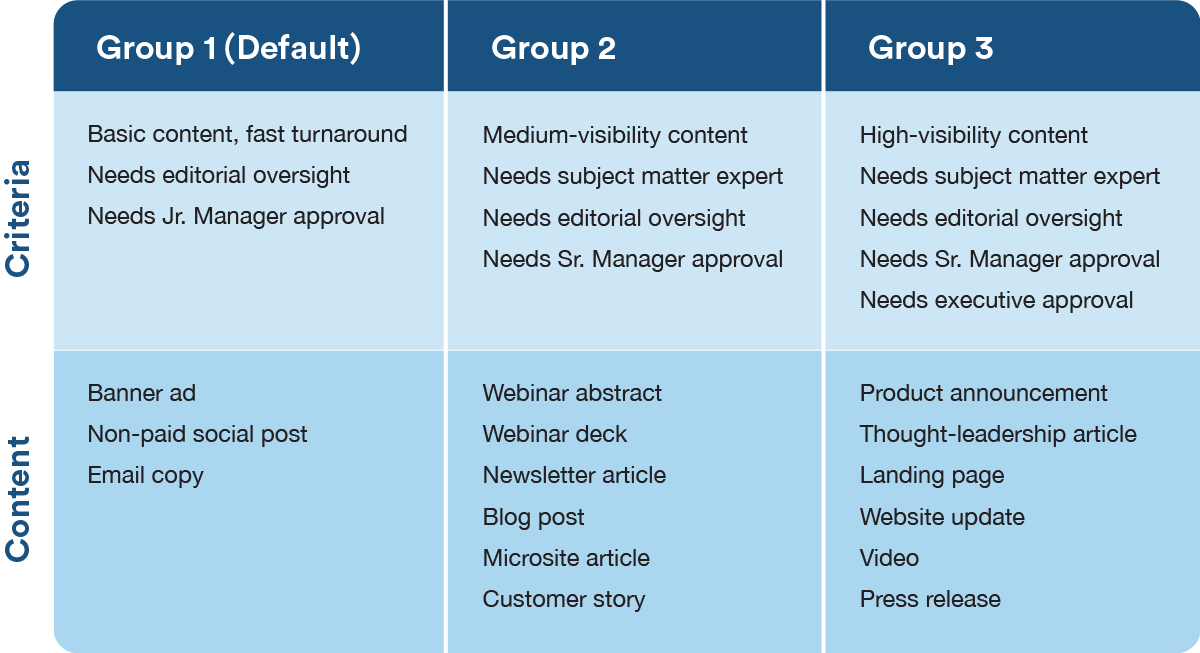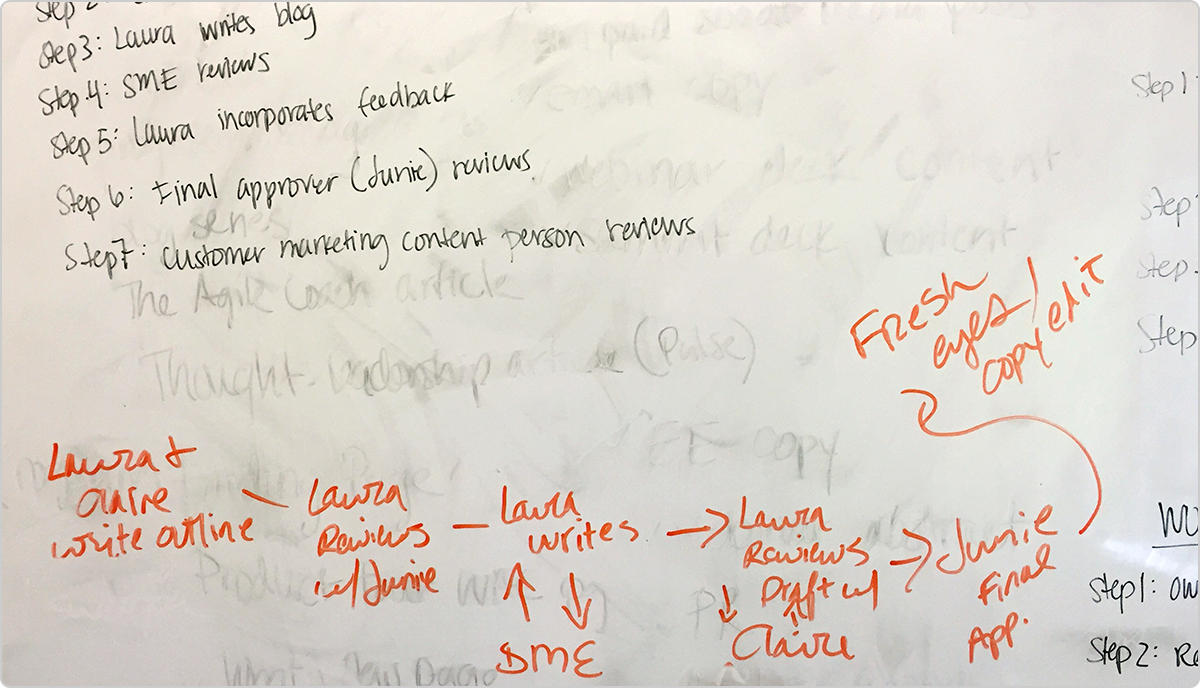3 steps to marketing zen: how to visualize your workflow
Workflows provide a huge advantage to your marketing process and the success of your projects. As a visualization tool, workflows can help your marketing team come to consensus on the steps needed to complete tasks, anticipate or remove bottlenecks, and move much more quickly. Put simply, workflows give everyone a sense of ownership and accountability.
For most marketing people, the word “workflow” sounds like a terrible mix of CrossFit and vinyasa yoga. Torture, basically. Yet workflows provide a huge advantage to your marketing process and the success of your projects. As a visualization tool, workflows can help your marketing team come to consensus on the steps needed to complete tasks, anticipate or remove bottlenecks, and move quicker. Creatives are free to do more creative things, like photoshop battles on Reddit. Managers get a better sense of control and insight into project statuses, and execs can stay in the loop. Put simply, workflows give everyone a sense of ownership and accountability.

Get the marketing workflow ebook
Before coding anything into a project management tool, here are three best practices for getting your team ready to workflow.
Step 1: list and group your content
Make a list of all the different content or assets you might create as a marketing team. Group the content using criteria that makes sense for your team.
Here’s an example of how the Jira product marketing team broke our content into groups:

This exercise made us realize just how many assets we work with. It forced us to talk about existing approval processes and ones that we needed to create. Prior, we never discussed official processes. Most approvals were done either ad hoc or in siloes. The system didn’t feel broken, necessarily, but when new team members joined it was impossible to explain. It just didn’t scale. Grouping different assets highlighted the similarities of certain types of content, the people that needed to be involved, and the steps necessary to get stuff done.
Step 2: draw the process
All you need is a marker, a whiteboard, and coffee. Draw out what steps are needed, the people involved, and the normal review cycles you go through to get something published. Get all the details out on the board, even if the process is complex. Spoiler: Next, I’m going to tell you to simplify it.

For this meeting, ask all the stakeholders to pick an asset and explain how they get it approved or done. You’ll start to see patterns where certain assets overlap – this informs your workflow needs. Much like grouping your content, this will make something that was implicit into something that’s explicit, and in a way that everyone can understand.
Pro tip: Take your work through the most complex workflow to get feedback and approval. This will allow you to test it out before you ship it.
Step 3: simplify the $#!* out of it
Using a tool like Jira Core, you can customize your workflow with as much detail as you like. However, I highly recommend starting with a simple workflow to get the hang of it. This could be as simple as To Do, In Progress, In Review, and Done. Take the work you did in Step 2 and assign different stakeholders to the various steps of your simplified workflow.
The following is an example of a complex workflow our marketing team established in Step 2. You’ll see that we explicitly assigned the type of role needed for the various steps in the process:

We then took this model and simplified it down to just: Open, Draft, Under Review and Publish. We kept track of who was responsible for each step in Confluence, our collaborative document sharing tool. While a tool like Jira Core would allow you to actually assign people to certain stages, we chose to do this first while we tested it out.
Here’s what the workflow looked like:

By working with a simplified workflow to start, your team can spend time defining roles and getting used to having a pre-defined process before going through the work of coding it.
When we started this exercise, we had three workflows that mapped to our content grouping in Step 1. We ended up consolidating into two: one that served as a default workflow, and another that captured a more complex process, requiring an added layer of approvals. We did this because our two most complex workflows actually ended up being very similar, if not ostensibly the same. We learned that having too many variables, statuses, and transitions slowed our progress with getting our workflows shipped. So we took a step back, simplified, and then added in more complex variables later, once we learned what worked best for our team.
A note on review cycles: Review cycles can have several steps and continue until that stage is complete. So, for example, Draft and Under Review could contain more than one person’s review. In the above example, the asset doesn’t move to Under Review until the “program asset owner” has shared their work with the “subject matter expert.”
Why your team will love workflows
Getting your marketing team to agree on the steps of a process can be an empowering exercise for everyone. When you’re finished, everyone will know their exact role in getting marketing assets out the door. You can put at least some structure behind your creative process. Everyone can keep tabs on what’s coming and going. You’ll realize that the CMO doesn’t always have to be the final approver and that different content deserves different processes. But best of all, you’ll be able reduce, or even eliminate fire drills, which should be music to any marketers ears.
Once you’ve gotten the hang of your newly defined process, you can set up your workflow in Jira Core. Jira Core has three different templates that you can customize to visualize your workflow to fit exactly how your team works. We even wrote a blog about it 🙂
Read about setting up workflows in Jira Core
